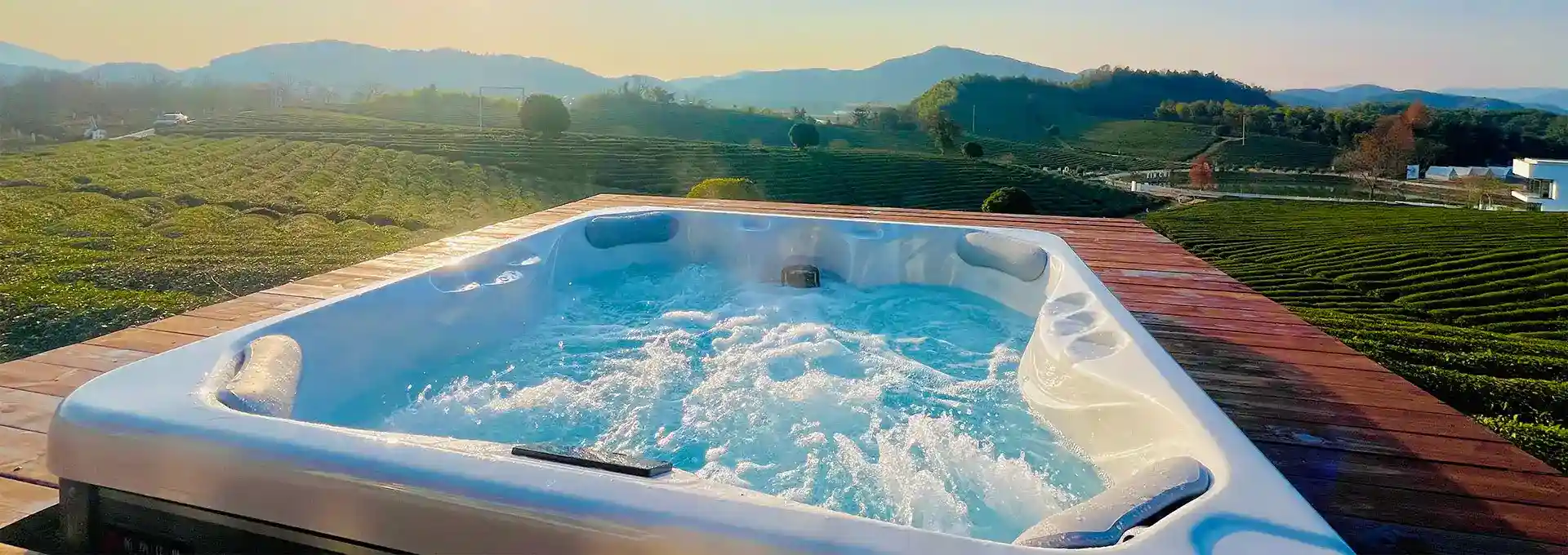Why Is My Hot Tub Overheating?
2024-07-29 17:25:17
Hot tubs are designed to provide a relaxing and enjoyable experience, but when they start to overheat, it can quickly turn into a frustrating and potentially dangerous situation. Overheating in a hot tub occurs when the water temperature rises above the set point and continues to climb, often reaching uncomfortably high levels. This issue not only disrupts your planned relaxation time but can also pose health risks and cause damage to the hot tub's components. In this blog post, we'll explore the common causes of hot tub overheating, how to diagnose the problem, and what steps you can take to prevent it from happening in your 6-seater hot tub.
How Much Does a 6 Seater Hot Tub Cost to Run?
When considering the purchase or maintenance of a 6-seater hot tub, one of the most common questions that arise is about the running costs. The expense of operating a hot tub can vary significantly based on several factors, including energy efficiency, usage patterns, and local utility rates.
Energy efficiency is a crucial factor in determining running costs. Modern 6-seater hot tubs are designed with improved insulation and more efficient heating systems compared to older models. This means they require less energy to maintain the desired water temperature, resulting in lower operating costs. Look for hot tubs with full-foam insulation and high-quality covers to minimize heat loss.
Usage patterns play a significant role in running costs. The frequency of use, desired water temperature, and ambient air temperature all affect energy consumption. For example, maintaining a higher water temperature in colder climates will require more energy. On average, a well-insulated 6-seater hot tub used 2-3 times a week might cost between $20 to $50 per month in electricity.
Local utility rates can greatly impact your running costs. Electricity prices vary widely across different regions, so it's essential to consider your local rates when estimating expenses. Some areas offer off-peak electricity rates, which can be utilized to reduce costs by heating the tub during these times.
Water care is another aspect of running costs. Regular chemical treatments are necessary to maintain water quality and hygiene. The cost of chemicals for a 6-seater hot tub typically ranges from $20 to $40 per month, depending on usage and the specific products used.
To minimize running costs:
1. Invest in a high-quality, energy-efficient model with good insulation.
2. Use a well-fitting, insulated cover when the hot tub is not in use.
3. Lower the temperature when not in use, especially for extended periods.
4. Consider using a timer to heat the tub during off-peak electricity hours.
5. Maintain the hot tub regularly to ensure all components are working efficiently.
By taking these steps, you can enjoy your 6-seater hot tub without worrying excessively about high running costs.
What Size Breaker Do I Need for a 6 Person Hot Tub?
Selecting the correct breaker size for your 6-person hot tub is crucial for safe and efficient operation. The breaker protects your electrical system from overload and short circuits, so choosing the right size is not just about functionality—it's a matter of safety.
Typically, a 6-person hot tub requires a 50-60 amp breaker. However, the exact size can vary depending on the specific model and its power requirements. It's essential to consult your hot tub's manual or speak with the manufacturer to determine the exact specifications for your model.
Several factors influence the breaker size needed:
1. Voltage requirements: Most residential hot tubs operate on 220-240 volts, which requires a double-pole breaker.
2. Total amperage draw: This includes the heater, pumps, blowers, and other electrical components.
3. National and local electrical codes: These regulations may dictate minimum requirements for hot tub installations.
4. Future upgrades: Consider potential additions like lighting or audio systems that might increase power needs.
When installing a new breaker for your hot tub, it's crucial to ensure that your home's electrical panel can handle the additional load. An older home might need an electrical service upgrade to accommodate a large hot tub safely.
It's strongly recommended to hire a licensed electrician for the installation. They can:
1. Assess your current electrical system.
2. Determine the correct breaker size based on your specific hot tub model and local codes.
3. Install the breaker and necessary wiring safely and in compliance with regulations.
4. Perform any required inspections or obtain necessary permits.
Using an undersized breaker can lead to frequent tripping, which is inconvenient and can potentially damage your hot tub's components. Conversely, an oversized breaker might not trip when needed, posing a safety hazard.
Remember, electrical work involving high amperage devices like hot tubs can be dangerous if not done correctly. Always prioritize safety and compliance with local regulations when setting up your 6-person hot tub's electrical system.
How Often Should You Change the Water in a 6 Person Hot Tub?
Maintaining clean and hygienic water in your 6-person hot tub is essential for both the health of users and the longevity of the tub itself. One crucial aspect of this maintenance is knowing how often to change the water.
As a general rule, the water in a 6-person hot tub should be changed every 3 to 4 months. However, this frequency can vary based on several factors:
1. Usage frequency: If your hot tub sees heavy use, you might need to change the water more often.
2. Number of users: More people using the tub means more contaminants introduced, potentially requiring more frequent water changes.
3. Maintenance routine: Regular cleaning and proper chemical balance can extend the time between water changes.
4. Water quality: If you notice cloudy water, foaming, or unpleasant odors, it might be time for a change regardless of the timeframe.
To determine if it's time to change your hot tub water, you can use the following formula: Divide the number of gallons in your hot tub by 3, then divide that number by the average number of daily users. This gives you the number of days you can go between water changes. For example, if your 6-person hot tub holds 400 gallons and has an average of 2 daily users: (400 ÷ 3) ÷ 2 = 67 days.
When changing the water in your 6-person hot tub, follow these steps:
1. Turn off the power to the hot tub.
2. Drain the tub completely using the drain valve or a submersible pump.
3. Clean the empty tub thoroughly, paying attention to jets and crevices.
4. Rinse the tub to remove any cleaning residue.
5. Refill the tub with fresh water.
6. Balance the water chemistry according to manufacturer recommendations.
7. Run the jets to circulate the water and ensure proper mixing of chemicals.
Regular water changes offer several benefits:
1. Improved water quality and clarity
2. Reduced risk of skin irritations or infections
3. Extended life of hot tub components
4. Better overall hot tub performance
Between water changes, maintain your hot tub by:
1. Testing water chemistry regularly (2-3 times per week)
2. Adjusting chemicals as needed
3. Cleaning the filter weekly
4. Showering before entering the hot tub to reduce contaminants
By adhering to a regular water change schedule and maintaining proper water chemistry, you can ensure that your 6-person hot tub remains a safe and enjoyable retreat for relaxation and socializing.
In conclusion, understanding why your hot tub is overheating, knowing the running costs, selecting the right breaker size, and maintaining proper water quality through regular changes are all crucial aspects of owning and enjoying a 6-seater hot tub. By addressing these key areas, you can ensure a safe, efficient, and pleasant hot tub experience for years to come.
For more information on hot tub installations and to find out more about our products, please feel free to contact us at info@iparnassus.com.
References:
1. Energy.gov. (2021). Energy-Efficient Home Design.
2. Electrical Safety Foundation International. (2022). Hot Tub Safety.
3. Association of Pool & Spa Professionals. (2023). Hot Tub Maintenance Guide.
4. U.S. Consumer Product Safety Commission. (2021). Pool and Spa Safety.
5. American Red Cross. (2022). Water Safety for Pool and Hot Tub Owners.
6. National Electrical Code. (2023). Article 680: Swimming Pools, Fountains, and Similar Installations.
7. Environmental Protection Agency. (2022). WaterSense for Your Home.
8. Centers for Disease Control and Prevention. (2023). Healthy Swimming/Recreational Water.
9. Hot Tub University. (2024). The Complete Guide to Hot Tub Maintenance.
10. International Hot Tub Association. (2023). Best Practices for Hot Tub Ownership.



